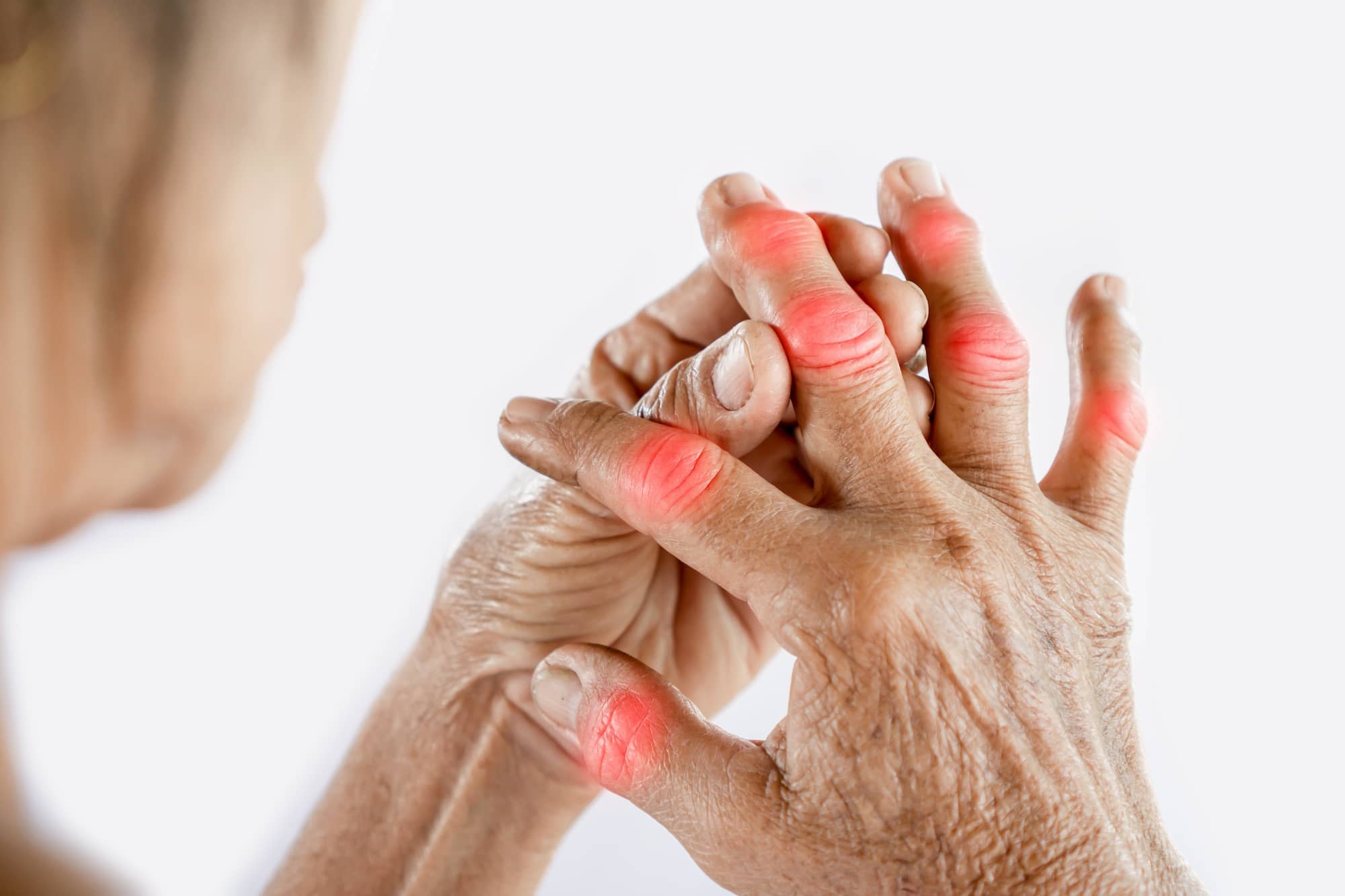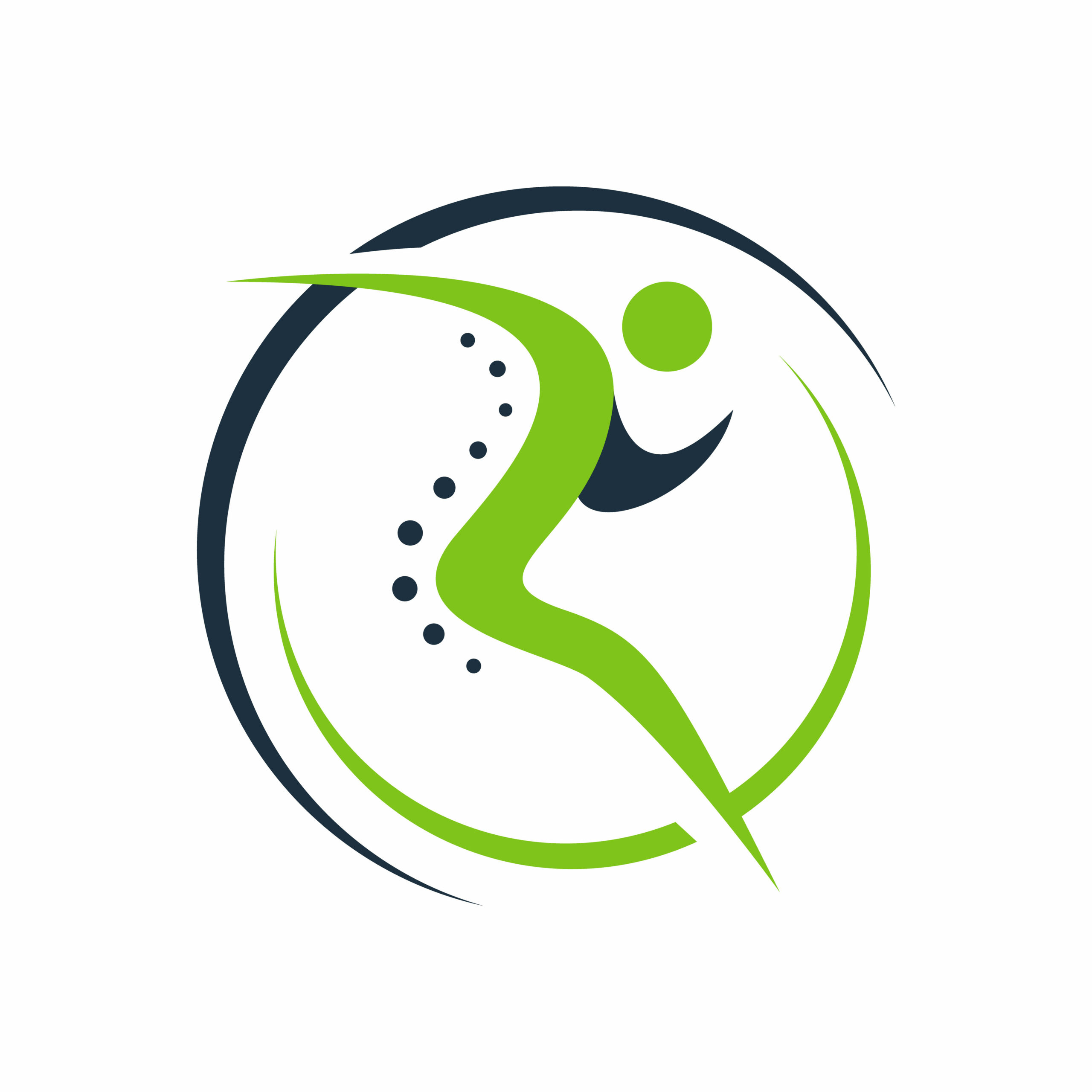Posts by Foley Chiropractic
Immune Systems
Chiropractic Care Builds a Stronger Immune System
Your immune system is your body’s natural defense against illness, and keeping it strong is essential for overall health. While many people focus on diet, exercise, and sleep to support immunity, chiropractic care plays an often-overlooked yet powerful role. Through spinal adjustments and nervous system optimization, chiropractic care directly contributes to a stronger, more resilient immune system.
The Connection Between the Spine and Immunity
The immune system and nervous system are intricately connected. Your nervous system controls every function in your body, including the regulation of your immune response. Misalignments in the spine, known as subluxations, can interfere with nerve signals traveling between your brain and the rest of your body. This interference can lead to reduced immune efficiency and make your body more susceptible to illness.
Chiropractic adjustments restore proper alignment to the spine, removing nerve interference and allowing your immune system to function at its best. By addressing these subluxations, chiropractors help maintain clear communication between the brain and the immune system.
Scientific Support for Chiropractic and Immunity
Research has shown a correlation between chiropractic care and enhanced immune response. One study found that spinal adjustments can increase the production of white blood cells, the body’s first line of defense against infection. Another study revealed that patients receiving regular chiropractic care had a 200% stronger immune response compared to those who did not.
Stress Reduction and Immune Health
Stress is a major factor that weakens the system. Chronic stress elevates cortisol levels, which suppress immune function. Chiropractic care reduces physical stress on the body by improving posture, relieving tension, and addressing pain. These benefits help lower cortisol levels and promote a healthier, more balanced immune response.
Preventative Health with Chiropractic
Chiropractic care is not just about addressing back pain—it’s a proactive approach to overall wellness. By keeping your spine aligned and your nervous system functioning optimally, you support your body’s natural ability to fight off illness. Regular adjustments can make a significant difference in how your body responds to seasonal colds, flu, and other common ailments.
Investing in chiropractic care is investing in your health. By boosting your system naturally, you’re giving your body the tools it needs to stay strong and resilient. Schedule a visit today and discover how chiropractic care can help you feel your best year-round.
Click here to contact our Office or call 612-730-4091
Arthritis
Chiropractic treatment offers a holistic approach to managing arthritis, focusing on improving joint function, reducing pain, and enhancing overall mobility. Chiropractic care can be a valuable component of a comprehensive treatment plan, helping individuals with arthritis lead more active and pain-free lives.
One of the primary benefits of chiropractic treatment for arthritis is its emphasis on spinal adjustments. These adjustments aim to correct misalignments in the spine, which can alleviate pressure on the nervous system and improve joint function. When the spine is properly aligned, the body’s ability to heal and function optimally is enhanced. For arthritis patients, this can mean reduced pain, less stiffness, and improved range of motion.
Dr. Foley uses manual therapy techniques, such as joint mobilization and soft tissue manipulation, to address the symptoms. These techniques help to increase joint flexibility, reduce inflammation, and improve circulation in the affected areas. By improving blood flow, chiropractic care can promote the body’s natural healing processes, helping to repair damaged tissues and reduce the severity of symptoms.
In addition to spinal adjustments and manual therapies, chiropractors often provide personalized exercise programs designed to strengthen the muscles surrounding the joints. Stronger muscles can better support the joints, reducing the strain placed on them and, consequently, the pain associated with arthritis. These exercise regimens are typically low-impact, focusing on improving flexibility, balance, and strength without exacerbating joint pain.
Dr. Foley also emphasizes lifestyle modifications that can help manage arthritis symptoms. This may include recommendations for ergonomic changes in daily activities, dietary advice to reduce inflammation, and stress management techniques. Chiropractors take a whole-body approach, addressing not only the physical aspects of arthritis but also the lifestyle factors that can influence the condition.
Moreover, chiropractic treatment is drug-free, making it an appealing option for those seeking to avoid the side effects associated with long-term medication use. By focusing on natural methods of pain relief and joint function improvement, chiropractic care can be an effective complement to other arthritis treatments, such as physical therapy, medication, or surgery.
Dr. Foley offers a multifaceted approach to managing arthritis. Through spinal adjustments, manual therapies, exercise, and lifestyle advice, chiropractors can help individuals with arthritis improve their joint function, reduce pain, and enhance their overall quality of life. This holistic, non-invasive approach makes chiropractic care a valuable option for those looking to manage arthritis naturally and effectively.
Click here to contact our Office or call 612-730-4091
Carpal Tunnel
Carpal Tunnel Syndrome (CTS) is a common condition that affects the hand and wrist. It occurs when the median nerve, which runs from the forearm into the palm, becomes compressed at the wrist. This nerve controls sensations to the palm side of the thumb and fingers (excluding the little finger) and impulses to some small muscles in the hand that allow the fingers and thumb to move.
Symptoms of Carpal Tunnel Syndrome include numbness, tingling, and pain in the fingers, hand, or wrist. These symptoms often occur during the night or upon waking. As the condition progresses, people may experience weakness in the hand, making it difficult to perform simple tasks like gripping objects, buttoning clothes, or typing.
Chiropractic care offers a non-invasive, drug-free approach to managing Carpal Tunnel Syndrome. Chiropractors focus on the musculoskeletal system and employ various techniques to alleviate symptoms and address the root cause of the problem. Here are several ways a chiropractor can help with Carpal Tunnel Syndrome:
- Spinal and Wrist Adjustments: Chiropractors perform adjustments to the wrist, elbow, and spine to reduce pressure on the median nerve. These adjustments can improve the alignment of the bones and joints, which may alleviate nerve compression and reduce inflammation.
- Soft Tissue Therapy: Chiropractors use techniques such as myofascial release, trigger point therapy, and massage to relax tight muscles and improve blood flow to the affected area. These therapies can help reduce inflammation, ease pain, and promote healing.
- Ultrasound Therapy: This treatment uses sound waves to create deep heat therapy, which can penetrate the tissues of the wrist. The heat helps to reduce pain and inflammation and increases blood flow, promoting faster healing.
- Lifestyle and Ergonomic Advice: Chiropractors often provide guidance on lifestyle changes and ergonomic improvements to prevent the recurrence of Carpal Tunnel Syndrome. This advice may include modifications to workstations, proper hand positioning, and exercises to strengthen the wrist and hand muscles.
- Exercises and Rehabilitation: Specific exercises can help improve the range of motion, strengthen the muscles, and reduce the symptoms of Carpal Tunnel Syndrome. Chiropractors can develop a personalized exercise program to enhance wrist flexibility and strength.
- Nutritional Support: In some cases, chiropractors may recommend dietary changes or supplements to reduce inflammation and support nerve health. For example, increasing the intake of vitamin B6, omega-3 fatty acids, and anti-inflammatory foods can be beneficial.
By addressing the underlying causes of Carpal Tunnel Syndrome and using a combination of manual therapies, exercises, and lifestyle modifications, chiropractors can offer significant relief to those suffering from this condition. Regular chiropractic care not only helps alleviate the symptoms but also promotes overall hand and wrist health, allowing individuals to return to their daily activities with less pain and discomfort.
Click here to contact our Office or call 612-730-4091
4o
Headaches
Chiropractic care is increasingly recognized as an effective approach for managing headaches, offering relief to individuals suffering from headaches. These include tension headaches, migraines, and cervicogenic headaches. By employing spinal manipulation and other manual techniques, chiropractors aim to alleviate headache symptoms and address underlying causes.
One of the primary ways chiropractic helps with headaches is through spinal adjustments. Dr. Foley performs targeted adjustments to correct misalignments, particularly in the cervical spine. Misalignments, also known as subluxations, can impede proper nerve function and blood flow, contributing to headache development. Through precise manipulation, chiropractors restore spinal alignment, reducing tension and pressure on surrounding nerves and tissues. This realignment can alleviate headache frequency, severity, and duration.
Not only, but also, chiropractic care focuses on enhancing spinal mobility and flexibility. Stiffness and restricted movement in the spine can exacerbate headache symptoms, especially tension headaches. Chiropractors employ various techniques such as spinal mobilization and stretching exercises to improve range of motion and reduce muscle tension. By promoting spinal health and flexibility, chiropractic adjustments help prevent the recurrence of headaches and mitigate their impact on daily life.
In addition to spinal adjustments, chiropractors often incorporate soft tissue therapies into their treatment plans. Massage therapy, trigger point therapy, and myofascial release techniques are commonly used to relax tight muscles and alleviate trigger points that may contribute to headache development. These therapies promote circulation, reduce inflammation, and release muscle tension, providing immediate relief and long-term benefits for headache sufferers.
In fact, chiropractors offer lifestyle and ergonomic recommendations to address contributing factors to headaches. They educate patients on proper posture, ergonomics, and stress management techniques to minimize triggers and maintain spinal health. By identifying and addressing lifestyle factors that exacerbate headaches, chiropractors empower patients to take an active role in their health and well-being.
Research supports the effectiveness of chiropractic care for headache relief. Numerous studies have demonstrated the positive outcomes of chiropractic treatment in reducing headache frequency, intensity, and duration. Moreover, chiropractic care is often preferred by patients seeking drug-free alternatives or those who have not found adequate relief from conventional treatments.
Chiropractic care offers a holistic and non-invasive approach to managing headaches. Through spinal adjustments, soft tissue therapies, and lifestyle recommendations, chiropractors address underlying issues contributing to headache development and provide long-lasting relief. By restoring spinal health and promoting overall well-being, chiropractic care empowers individuals to live free from the burden of chronic headaches.
Click here to contact our Office or call 612-730-4091
Acupuncture
Acupuncture, a traditional Chinese medical practice, and is renowned for its ability to alleviate pain. Beyond its well-documented effectiveness in addressing musculoskeletal discomfort, such as back pain and headaches. It has also demonstrated significant pain-relieving effects in various other conditions.
One notable area where this technique has shown promise is in the management of migraines and tension headaches. Studies have indicated that regular sessions can lead to a reduction in the frequency, intensity, and duration of migraine attacks. Acupuncture helps modulate pain perception pathways, thus providing relief to individuals suffering from chronic headaches.
Furthermore, acupuncture is beneficial for individuals experiencing neuropathic pain, a type of pain caused by damage or dysfunction of the nervous system. Conditions such as diabetic neuropathy, postherpetic neuralgia (shingles), and peripheral neuropathy often result in persistent pain that can be challenging. However, acupuncture offers a non-invasive approach to managing neuropathic pain by promoting the release of endorphins and other neurotransmitters.
In addition to its role in relieving physical pain, acupuncture has also been recognized for its effectiveness in addressing psychological distress. Anxiety, depression, and stress-related disorders can manifest with physical symptoms such as muscle tension and headaches. Its ability to regulate the body’s stress response and promote relaxation makes it a valuable adjunct therapy for individuals grappling with emotional discomfort. By targeting specific points associated with calming the nervous system, acupuncture sessions can promote a sense of well-being and alleviate both physical and emotional pain.
The pain-relieving effects extend beyond the realm of chronic conditions to include acute pain management as well. For instance, research has shown that acupuncture can be an effective adjunct therapy for postoperative pain control. By stimulating the body’s natural pain-relief mechanisms, acupuncture can help reduce the need for opioid medications, thereby minimizing the risk of dependence and side effects associated with traditional painkillers.
Moreover, acupuncture has gained attention for its potential role in alleviating pain associated with menstrual disorders, such as dysmenorrhea (painful periods) and endometriosis. By targeting specific acupuncture points related to hormone regulation and blood flow, acupuncture can help mitigate menstrual cramps and pelvic pain, offering women a natural alternative or complement to conventional pain management strategies.
The pain-relieving effects extend far beyond its commonly known applications. Whether it’s managing migraines, neuropathic pain, psychological distress, or acute postoperative discomfort, acupuncture offers a holistic approach to pain relief that addresses both the physical and emotional aspects of suffering. As ongoing research continues to unveil the mechanisms underlying acupuncture’s efficacy, it is likely to emerge as an increasingly valuable tool in the comprehensive management of pain and discomfort.
Click here to contact our Office or call 612-730-4091
Weight loss
Chiropractic care isn’t just about alleviating back pain—it can be a valuable asset in achieving weight loss goals as well. Through a holistic approach that focuses on spinal alignment and optimizing nerve function, chiropractors can support individuals in their quest for a healthier weight and overall well-being.
One of the key ways chiropractic care aids in weight loss is by addressing spinal misalignments, also known as subluxations. These misalignments can disrupt communication between the brain and the body, leading to various health issues, including difficulties in managing weight. By performing spinal adjustments, chiropractors help to realign the spine, restoring proper nerve function and promoting optimal bodily function.
Furthermore, chiropractors provide personalized guidance on lifestyle factors such as nutrition, exercise, and stress management. They understand that achieving and maintaining a healthy weight requires more than just occasional adjustments—it involves making sustainable lifestyle changes. By offering tailored recommendations, chiropractors empower individuals to make healthier choices and adopt habits that support their weight loss goals.
In addition to spinal adjustments, chiropractic care can address underlying issues that may be hindering weight loss progress. Chronic pain and inflammation, for example, can make it challenging to engage in physical activity and adhere to a weight loss plan. Through techniques such as massage therapy and corrective exercises, chiropractors can help alleviate pain and inflammation, making it easier for individuals to stay active and committed to their weight loss journey.
Regular visits to a chiropractor also provide accountability and support. Individuals can track their progress, discuss any challenges they may be facing, and receive encouragement from a healthcare professional who is dedicated to their success. This ongoing support can be instrumental in staying motivated and overcoming obstacles along the way.
It’s important to recognize that while chiropractic care can be beneficial, it is most effective when combined with other healthy habits. Eating a balanced diet, engaging in regular physical activity, getting enough sleep, and managing stress are all essential components of a successful weight loss plan. By integrating chiropractic care into a comprehensive approach to health and wellness, individuals can maximize their chances of achieving and maintaining their desired weight.
Click here to contact our Office, or call 612-730-4091
Cupping
Cupping is an ancient therapeutic technique that originated in traditional Chinese medicine and has gained widespread attention in recent years. This is because of its purported health benefits.
The therapy involves placing cups on the skin and creating suction to promote healing and relaxation. Unlike passive treatments, cupping actively stimulates the body’s natural healing processes.
The process of cupping involves using glass, silicone, or plastic cups placed on specific areas of the body. A vacuum is created inside the cup either by heating the air within it or by using a suction pump. Once the vacuum is created, the cups are placed on the skin. Once there, they gently pull the skin and superficial muscle tissue upward into the cup. This suction can help increase blood flow to the area. This will promote circulation and aid in the release of tension and toxins trapped in the muscles.
One of the primary benefits of cupping is its ability to relieve muscle tension and soreness. The suction created by the cups helps to stretch tight muscles and fascia, promoting relaxation and reducing stiffness. Athletes often use cupping therapy as part of their training regimen to help speed up recovery from intense workouts and prevent injuries.
Cupping is also believed to have therapeutic effects on the body’s energy pathways, known as meridians in traditional Chinese medicine. By stimulating these meridians, cupping can help balance the flow of qi, or vital energy, throughout the body. This balance is thought to promote overall health and well-being, as well as provide relief from various ailments. Especially, headaches, digestive issues, and respiratory problems.
In addition to its physical benefits, cupping is also valued for its ability to promote mental relaxation and stress relief. The gentle pulling sensation of the cups on the skin can induce a deep sense of relaxation. Similar to that achieved through massage therapy. This relaxation response can help reduce anxiety and improve mood, providing both physical and mental rejuvenation.
While cupping therapy is generally considered safe when performed by a trained practitioner, it may cause temporary side effects such as bruising or skin irritation. However, these side effects are typically mild and resolve quickly. It’s essential to consult with a qualified healthcare provider before undergoing cupping therapy, especially if you have any underlying health conditions or concerns.
In conclusion, cupping therapy offers a unique approach to promoting health and well-being through its active stimulation of the body’s natural healing processes. By increasing circulation, relieving muscle tension, and promoting relaxation, cupping can provide a range of benefits for both the body and mind. Whether used as a standalone treatment or as part of a comprehensive wellness plan, cupping therapy offers a holistic approach to health and healing.
Click here to contact our office or call 612-730-4091
![AdobeStock_304902871-[Converted] AdobeStock_304902871-[Converted]](https://www.foleychiropractic.net/wp-content/uploads/2018/08/AdobeStock_304902871-Converted-291x300.png)


